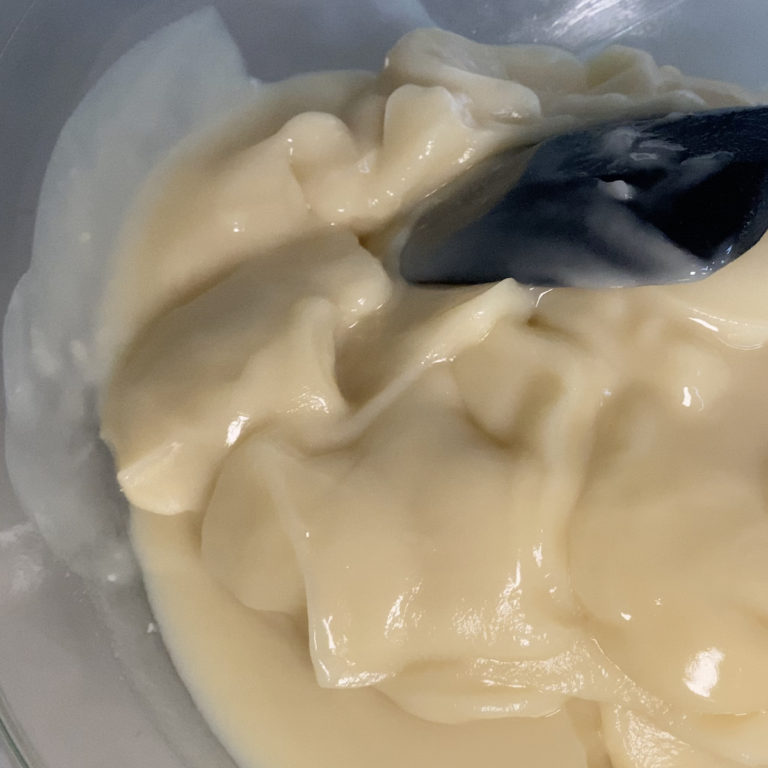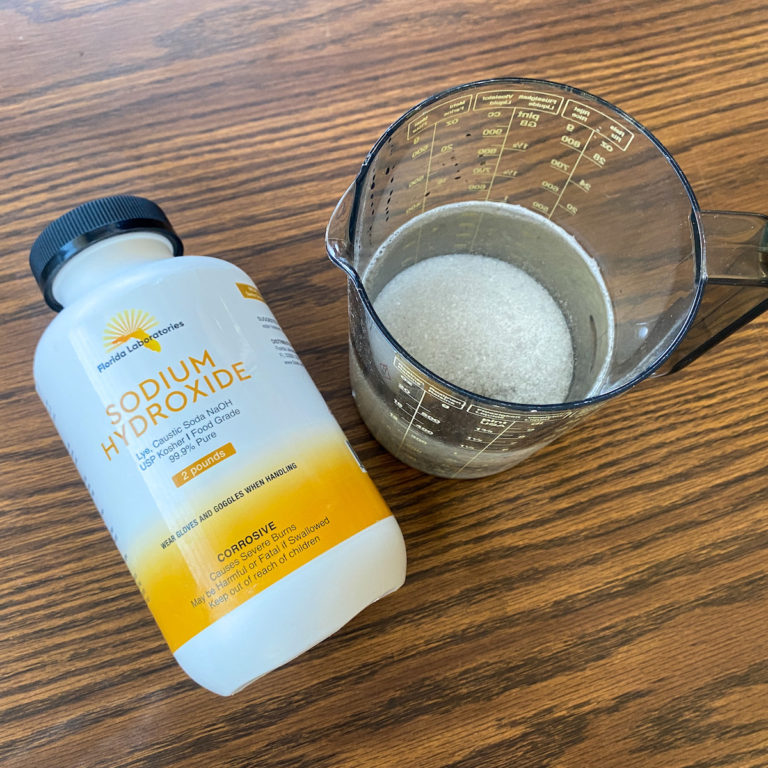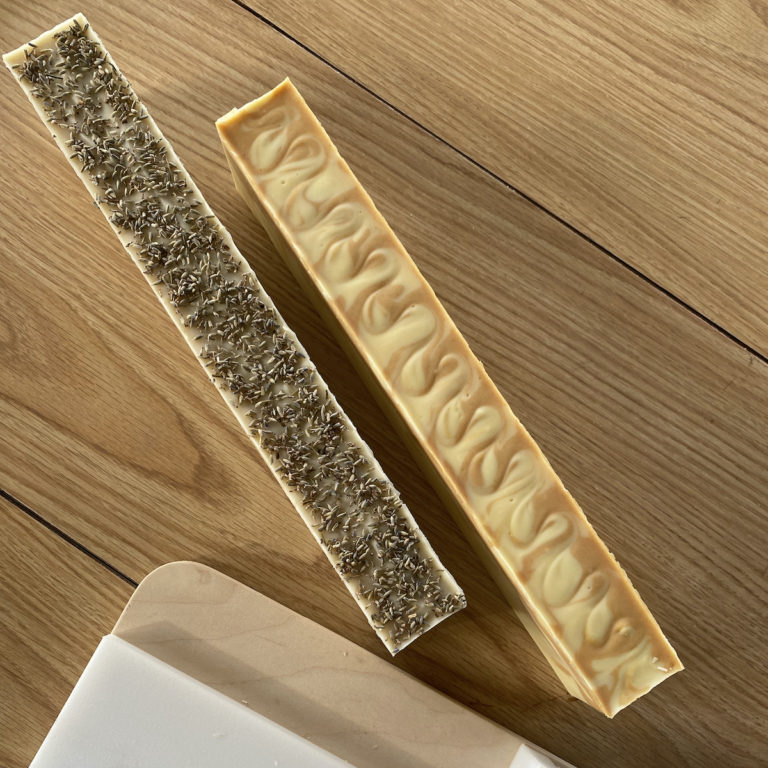Is Homemade Soap Biodegradable?
Homemade soap is a more cost-effective and environmentally-friendly alternative to store-bought soap (which in most cases is actually detergent shaped like a bar of soap). In addition, making your own soap is a sustainable way to tailor your soaps to your own needs and preferences. But for those of us concerned about the environment, you may be wondering “Is homemade soap biodegradable? Does it break down, or do components of it sit and sit without being able to return to the earth?”
Homemade soap IS biodegradable. Homemade soap does not include phosphates, which are the major pollutants found in store-bought soaps. Because saponified oil makes up the bulk of homemade soap (or it entirely makes up homemade some in some cases), it will definitely break down.
Making homemade soap is better for the environment than buying mass-marketed soap as it is much cheaper to make your own and is also extremely versatile. You can use it for laundry, household cleaning, handwashing, and dishwashing. To make homemade liquid soap, all you need are some ingredients that you probably already have in your home, which will be discussed in this article.
The Basic Chemistry of Soap

Before there were supermarkets and general stores, Ancient Romans and Egyptians made their own soap from two ingredients: lye and fat. The combination of lye and fat results in a chemical process called saponification, which means “soap making” in Latin.
Lye is called a hydroxide base, which means that lye will break down oils on contact. Since lye is a potent base with a pH of 13-14, raw lye can burn your skin. Mixing lye with oil in a process called neutralizing or superfatting will offset the high alkalinity of lye.
Most modern store-bought soaps contain phosphates. Phosphates are synthetic chemicals that were designed to make soap manufacturing more cost-efficient. However, phosphates remain insoluble in water, contaminating natural water sources and lingering in drinking water. These phosphates, released from detergents and soaps, contribute to algae’s overgrowth in natural water sources.
Making your own soaps with lye and oil can help to decontaminate our water sources and eliminate phosphates from the environment.
Lye
The type of hydroxide base, or lye, that you use will determine your soap’s thickness. To make liquid soap, you will need to use potassium hydroxide.
If you want to purchase potassium hydroxide, you can get it on amazon. I recommend Belle Chemical’s 90% Potassium Hydroxide since it is both food grade and very strong. Its potency makes the potassium hydroxide last a long time, saving me a lot of money.
You can purchase lye, but if you want to commit to making your own soap, you can easily make your own lye for no cost. You will only need two ingredients: ashes and water.
It would be best if you use caution in this process. Wear gloves, goggles, and a face mask. Lye’s extreme alkalinity can burn your skin on contact. If you get any of the lye solutions on your skin, rinse it off immediately.
- Collect ashes. If you are making liquid soap, you should use the ashes from hardwood trees such as ash, hickory, beech, sugar maple, cherry, oak, or walnut trees. These trees contain potassium, which is the ingredient that will make your soap a liquid.
- Soak the ashes. In a non-metal container, combine the ashes with just enough water to make a paste or slurry.
- Wait 3-7 days. Allow the ashes to react with the water. Place your container in an outdoor area, as the fumes from the reaction can be caustic. Do not cover the container.
- Test the lye. You can test the strength of your lye water by placing an egg in your mixture. If the egg floats, leaving a nickel-sized spot exposed, your lye is done.
- Strain the lye water. Now, with all of your safety gear on, strain the lye water with a fine sieve, cheesecloth, or tea towel. The resulting lye water is your completed product.
Because lye can be hazardous, always use a soap recipe or a soap calculator like this one when making soap with lye.
Oil
The type of oil that you use will determine the kind of lather that your soap will have. Some oils make soaps more transparent, bubblier, more moisturizing, thicker, or more long-lasting than others. For this recipe, you can substitute any of these oils:
- Olive oil. Olive oil makes a clear liquid soap, and it adds extra bubbles to your mixture. Olive oil also has a 2-year shelf life, making it a long-lasting soap ingredient.
- Coconut oil. Coconut oil is antibacterial and antifungal, making it a powerful cleanser and moisturizer.
- Fractionated coconut oil. Fractionated coconut oil has been processed to make it a liquid, and it has a longer shelf life than pure coconut oil.
- Canola oil. Canola oil adds thickness to your soap.
- Castor oil. Castor oil makes your soap clear and foamy.
- Sunflower oil. Sunflower oil contains a lot of vitamin E, making it intensely moisturizing and helpful for repairing damaged skin.
- Hemp seed oil. Hemp seed oil is an excellent moisturizer, and its fatty acids make it perfect for soap making.
How To Make Your Own Biodegradable Liquid Soap
Making biodegradable soap is not only healthy for the environment but is also beneficial for your finances. Without much work or funding, you can easily make your own soap blends from scratch.
Materials and Ingredients
Liquid soap is a hot process soap, meaning that you will need to heat your soap as you make it. To make liquid soap, you will need:
- A large slow-cooker or crock-pot
- A wooden spoon
- A scale
- A tablespoon
- A whisk
- A pH meter or pH testing kit
You will also need:
- 10.3 oz homemade lye water or 3.4 oz potassium hydroxide dissolved in 10.3 oz water
- 8 oz olive oil
- 8 oz coconut oil
- 1 tablespoon white vinegar
- 23 oz hot water
- Fragrant herbs or essential oils such as lavender, rosemary, thyme, or cinnamon (optional)
Instructions
- If you made your own lye water, skip this step. If you have purchased potassium hydroxide concentrate, weigh out 3.4 oz potassium hydroxide and mix it into 10.3 oz of water.
- Melt the coconut oil on high heat in your slow cooker. Once it is melted, add the olive oil.
- Once the oils are hot, pour the lye solution into the slow cooker. Once the oils and the solution are clear, you can mix them with a wooden spoon.
- Wait for the mixture to heat up and then whisk them together until all of the clumps dissolve.
- Put the lid on the slow cooker and let simmer for 30 minutes. The mixture should bubble and rise.
- After waiting for 30 minutes, stir the mixture well.
- Boil your 23 oz of water in a separate pot. Once it is at a boil, spoon your soap mixture into the water. Once you have spooned all of the soap into your water, turn the heat off and let it sit overnight to dilute.
- After letting it sit overnight, test the pH of your mixture. You want your soap to have a pH of 9 or 10. If the mixture is lower than 9 or 10, add more lye water. If your soap mixture has a higher pH than 9 or 10, add more oil.
- Once the pH is correct, you can add herbs or essential oil to add fragrance to your soap. This step is entirely optional. If you add fragrance, allow your soap to sit overnight to allow the scent to mix throughout your soap evenly.
- Bottle your soap and enjoy!
Conclusion
Making homemade soaps is a fun and easy way to help eliminate phosphates from our water. Homemade soaps are incredibly versatile, and you can use them for any purpose, from laundry to dish cleaning. Making your own soaps will not only allow you to tailor your soaps to your personal preferences, but it will enable you to save money and help the environment.






